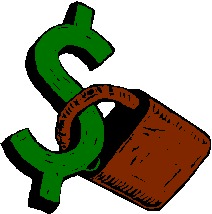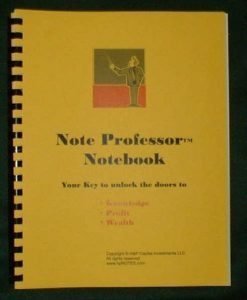Purchasing Part of a Balloon Note

Gift WRAPed
July 22, 2021By Tom Henderson
In earlier issues of The Note Professor Newsletter, we examined four different methods of purchasing balloon notes, but we never delved into purchasing the payments and PART of the balloon. As with most note purchasing strategies, there is more than one technique for buying part of a balloon. In this issue we are going to “number crunch” the least complex, yet also the most risky method of purchasing part of a balloon.
Let’s review a balloon note. The note has a $100,000 balance @ 5% interest, paying $659.96 monthly amortized over 240 months, with a balloon payment of $83,455 due in 5 years. Assume the Note Buyer wants to achieve a 12% yield. Remember that a balloon note actually has two cash flows; the monthly payments and the balloon payments.
If you, the Note Buyer, want to purchase the entire note, which include the payments and the balloon, you would pay $75,606. Your purchase would look like this:
N = 60
I/Yd = 12
PV = -$75,606
PMT = $659.96
FV = $83,455
But alas, the note sellers are not happy campers because they believe the discount is far too much. You can solve the note sellers’ objection to the discount, while at the same time limiting your exposure, by offering to purchase all the payments and PART of the balloon.
Here is the simplest method of calculating how much to pay for part of the balloon. Before anything else we must determine how much we would pay for the payments to acquire a yield of 12%. First we multiply the payments of $659.96 times 12 (months) to obtain an annual payment figure. Next we divide that figure by 12% to compute how much to pay for the payments to enjoy a 12% yield.
The calculations go as follows: $659.96 X 12 = $7,919.52. We then divide $7,919.52 by 12% and come up with $65,996. To put it another way, if we invested $65,996 in an interest bearing account paying 12%, we would receive $7,919.52 annually. However, like an interest bearing account where our principal will be withdrawn at some period in time, as a Note Buyer we also need to recover our principal of $65,996 we paid for the note. Therefore, $65,996 is the amount of the balloon we would receive. The note purchase would look like this:
N = 60
I/Yd = 12
PV = -$65,996
PMT = $659.96
FV = $65,996
Did the note sellers benefit from your purchasing part of the balloon? Let’s look. First they immediately received a lump sum of cash of $65,996. However, they also will receive part of the balloon. Since the total balloon is $83,455, and you, the Note Buyer will receive $65,966, the note seller will receive the remainder of $17,459. Added to the $65,996 they received up front, the note sellers will receive a total of $83,455. This is much more than the $75,606 offer to purchase the entire note. All are happy. You still received your 12% yield and the note sellers received more money for their note.
As a caveat, remember that yields are realized only after you get paid. The 12% yield can only be realized if the borrowers either refinance or sell the property at or before the balloon date. The possibility of the note going into default is a risk you must consider. There are solutions to minimize, or even capitalize on the risk of notes going into default using this method. However, this is a topic for another discussion.
Along the same lines, there other methods of purchasing part of a balloon that takes into consideration the balloon will not be paid as expected. These techniques are more complex, which require more groundwork and explanation than this forum allows. Perhaps, I can go into more detail in a future issue of The Note Professor Newsletter
In the meantime, just be aware there are several ways to purchase balloons. You are now head and shoulders above your competition by learning this method.
Contact Tom if you have questions or comments.


